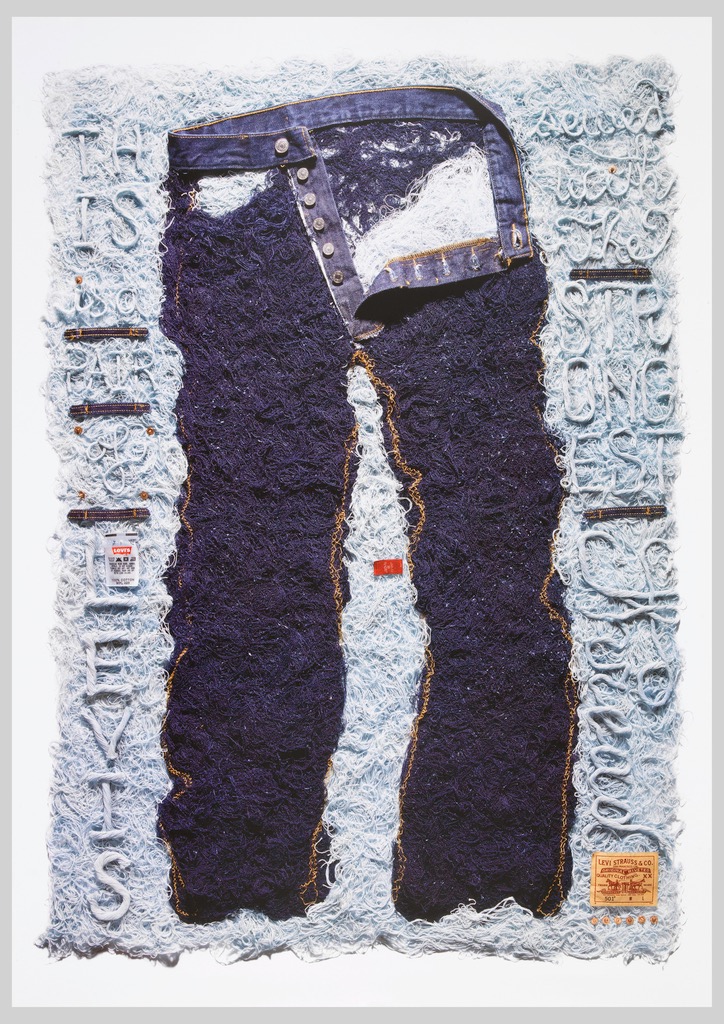In last month’s Short Story, Emily Orr, Cooper Hewitt’s assistant curator of modern and contemporary design, wrote about the history of store window display. In recognition of National Button Day on November 16, this month’s story celebrates the Cooper Hewitt collection of buttons.
Margery Masinter, Trustee, Cooper Hewitt, Smithsonian Design Museum
Sue Shutte, Historian at Ringwood Manor
Matthew Kennedy, Publishing Associate, Cooper Hewitt, Smithsonian Design Museum
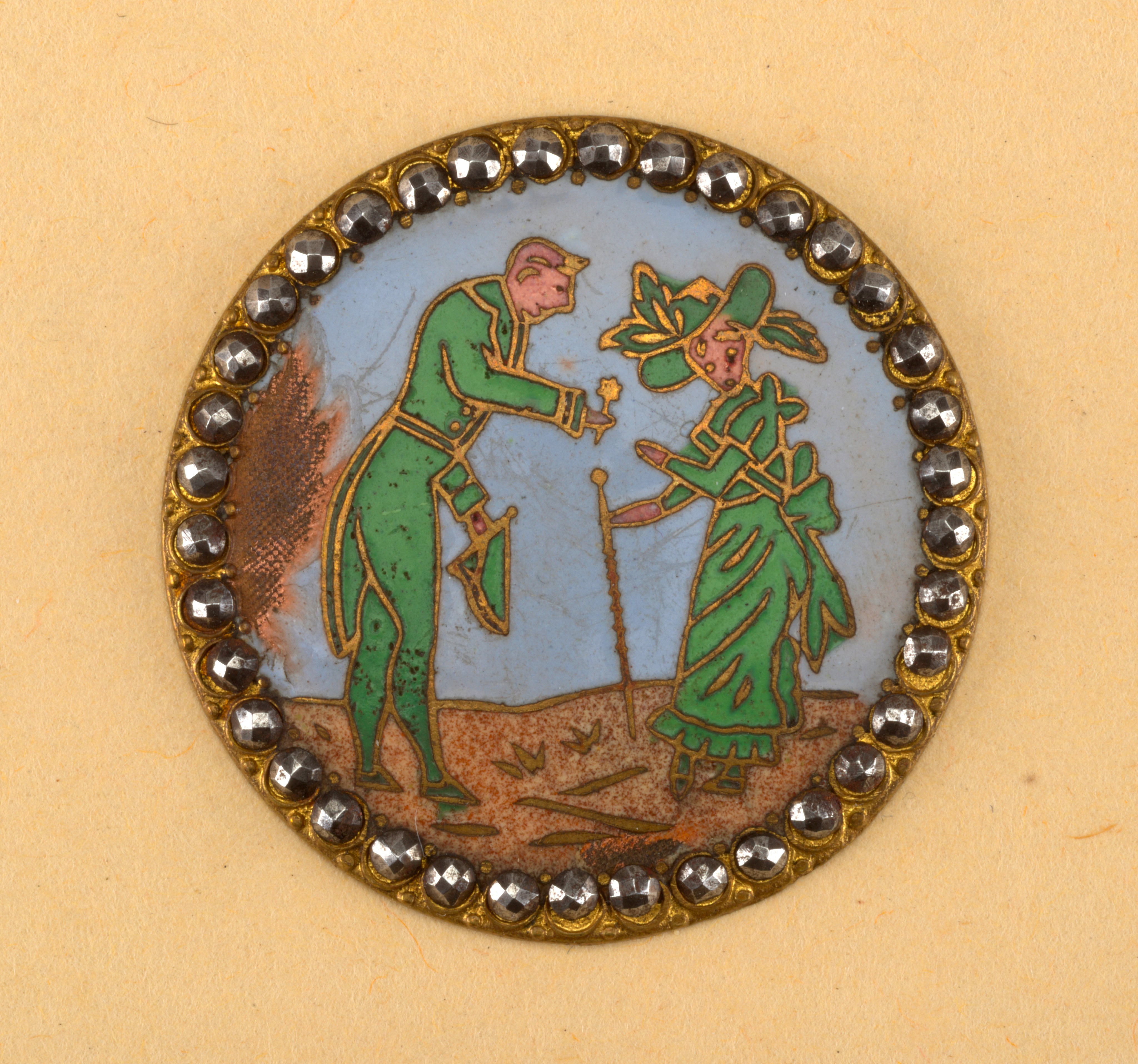
Scene of gentleman (in coat with buttons) handing a flower to a lady, late 19th century; Brass, steel, colored enamel. Gift of Sarah and Eleanor Hewitt, 1925-2-397-a,b
Sarah and Eleanor Hewitt were not immune to the charms of this tiny decorative art form and during their yearly travels through Europe collected buttons for their museum—primarily French buttons, of course. (See Meet the Hewitts, a blog series that tells the story of the Hewitt sisters and the founding of the Cooper Union Museum for the Arts of Decoration.)
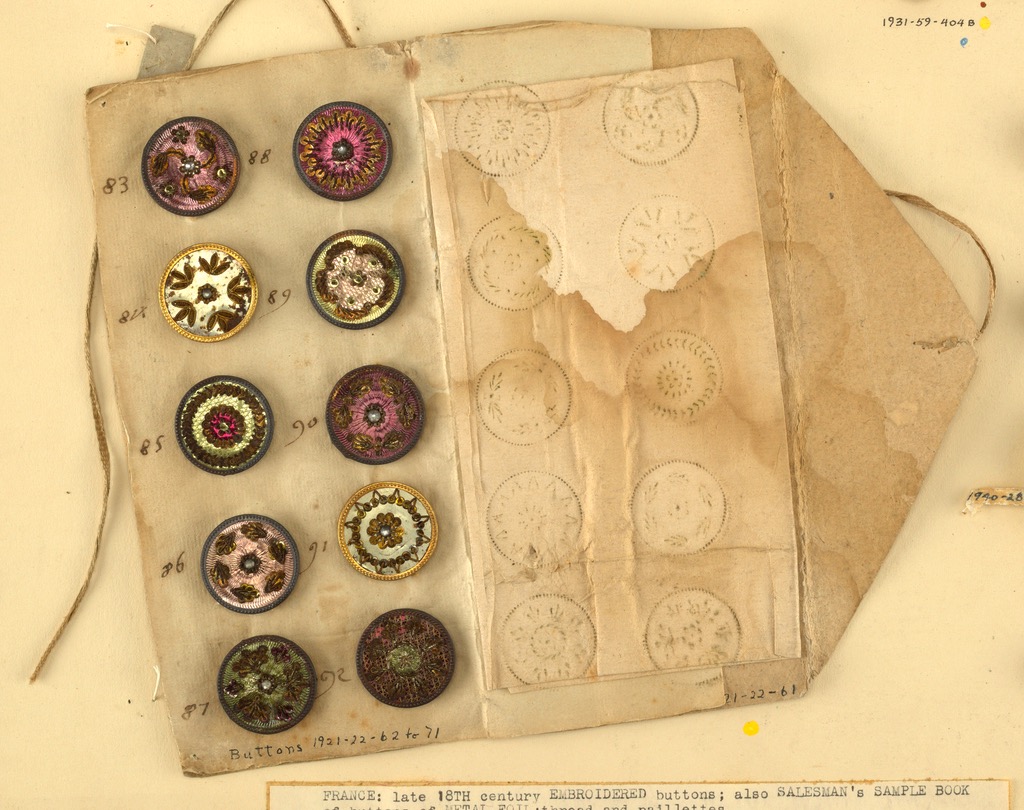
Button Sample Book (France), late 18th century; Paper, metal foil, thread, palettes; Gift of Sarah and Eleanor Hewitt, 1921-22-61
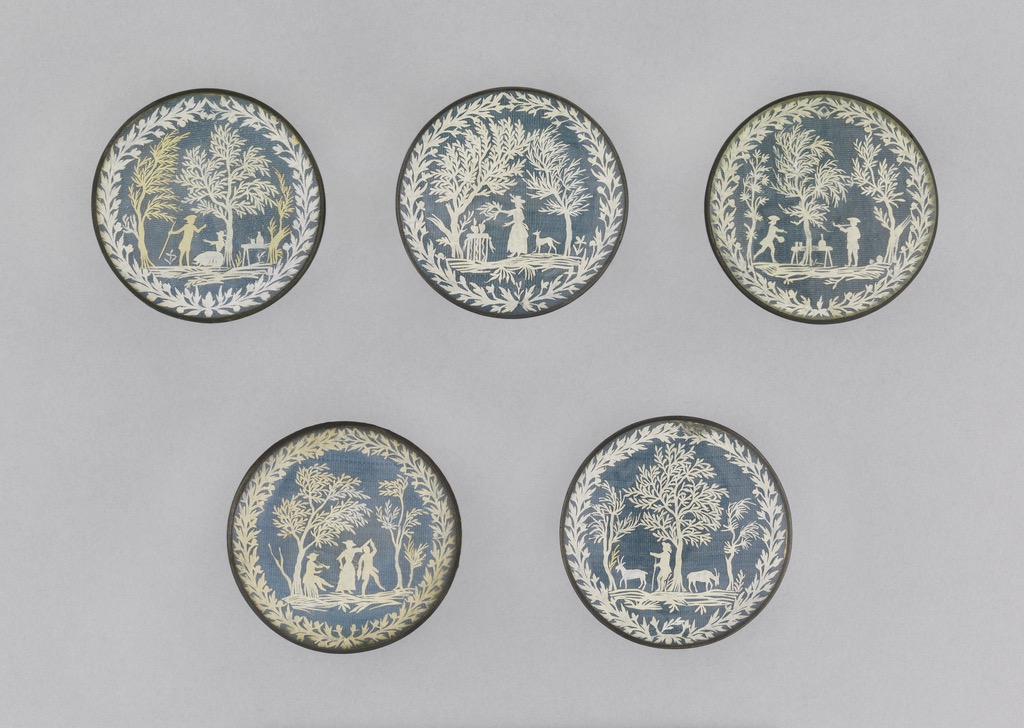
Scenes of a couple celebrating under the trees. Set of Ten Buttons (France), 1775–80; cut paper on silk set in copper with glass covers. Bequest of Sarah Cooper Hewitt; 1931-6-3-a/j
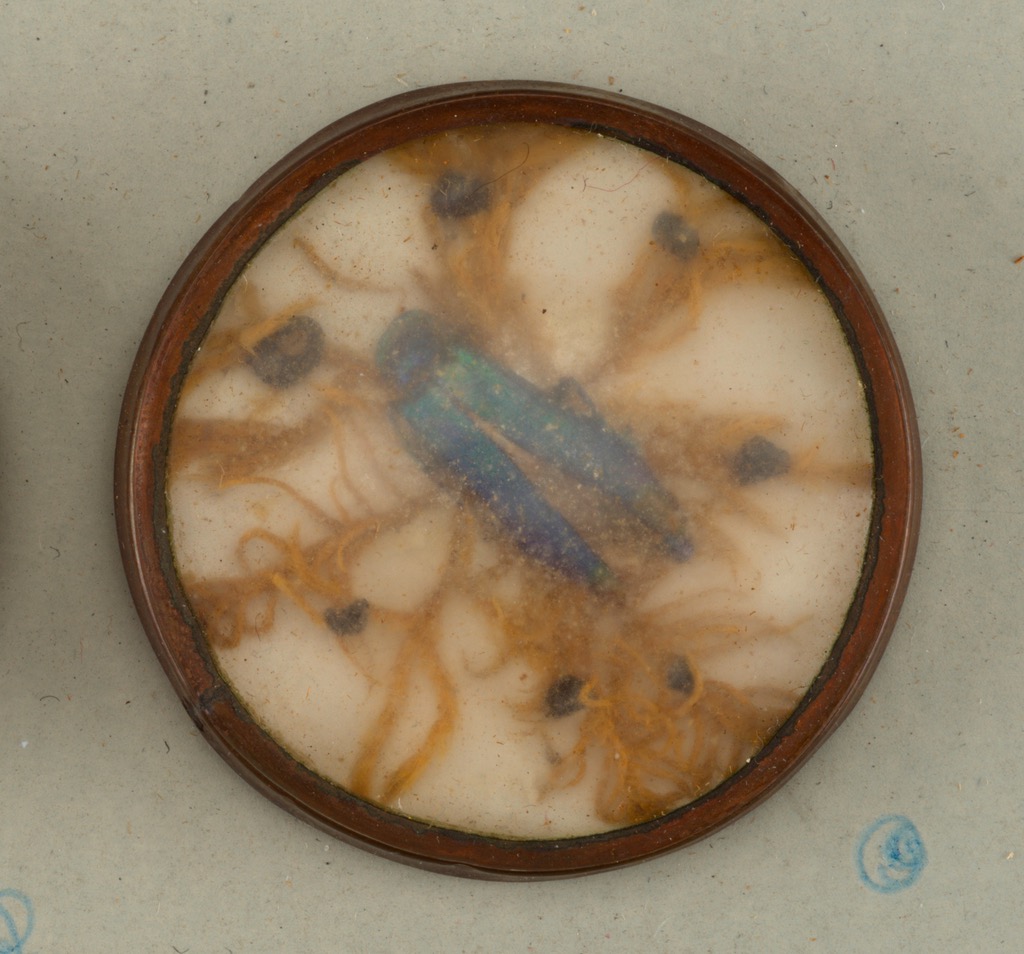
Example of an insect specimen encased in a button. From a set of 9 buttons (France), late 18th century, insects, shell, sea weed, paper, copper, tin, glass; Bequest of Sarah Cooper Hewitt, 1931-59-233-a/j
In 1940, the Cooper Union Museum held an exhibition of buttons titled Four Thousand and One. It was accompanied by a scholarly essay in the Chronicle of the Museum of Art and Decoration by Carl C. Dauterman. In 1982, Cooper Hewitt mounted Button, Button, another exhibition “of the little object of ornament and utility” (read the catalog). Today, Cooper Hewitt, Smithsonian Design Museum’s button collection is digitized for everyone—to enchant collectors, inspire designers, and excite historians. Additionally, Cooper Hewitt’s Object of the Day posts detail specific buttons, from celebrations of button counting to Enlightenment-era bugs.
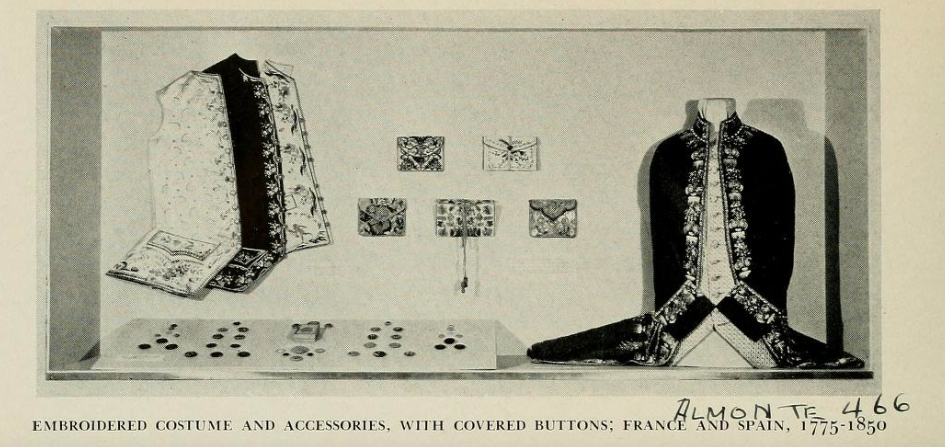
Exhibition photograph, “Four Thousand and One.” Chronicle of the Museum of Art of Decoration, Volume 1, 1940, page 240. (For Dauterman’s full essay, see pages 236–248 through the link above.)
Herbert de Givenchy, French fashion designer, wrote:
“Le bouton est non seulement indispensable, mais capable d’enjoliver un vêtement, de le personnaliser et de lui apporter la touche finale.” (Introduction to Boutons by Loïc Allio, 2001, Cooper Hewitt Design Library)
(“The button is not only indispensable, but capable of beautifying a piece of clothing, of personalizing it and giving it the final touch.” Translation by Caroline Baumann, Director of Cooper Hewitt.)
Although Givenchy, whose clients included Audrey Hepburn and Jackie Kennedy, retired from his house in 1990, current designers reinterpret his vision. In mid-October 2017, this coat with oversized jeweled buttons was in the window of the Givenchy store on Madison Avenue.

(left) Givenchy store window display, Madison Avenue, October 2017. (right) Imitation jewel button (French), 19th century; pearl, shell, copper and glass. Gift of Sarah and Eleanor Hewitt; 1931-59-332-a
The word “button” originates from the French word bouton, meaning “bud” or “knob.” Initially used to adorn men’s wear as a symbol of wealth and status, the eighteenth century was the great period of button design. Button makers were inventive in their choice of materials, using precious jewels, gold, porcelain, ivory, glass, shell, rare specimens, and many other embellishments of current fashion.
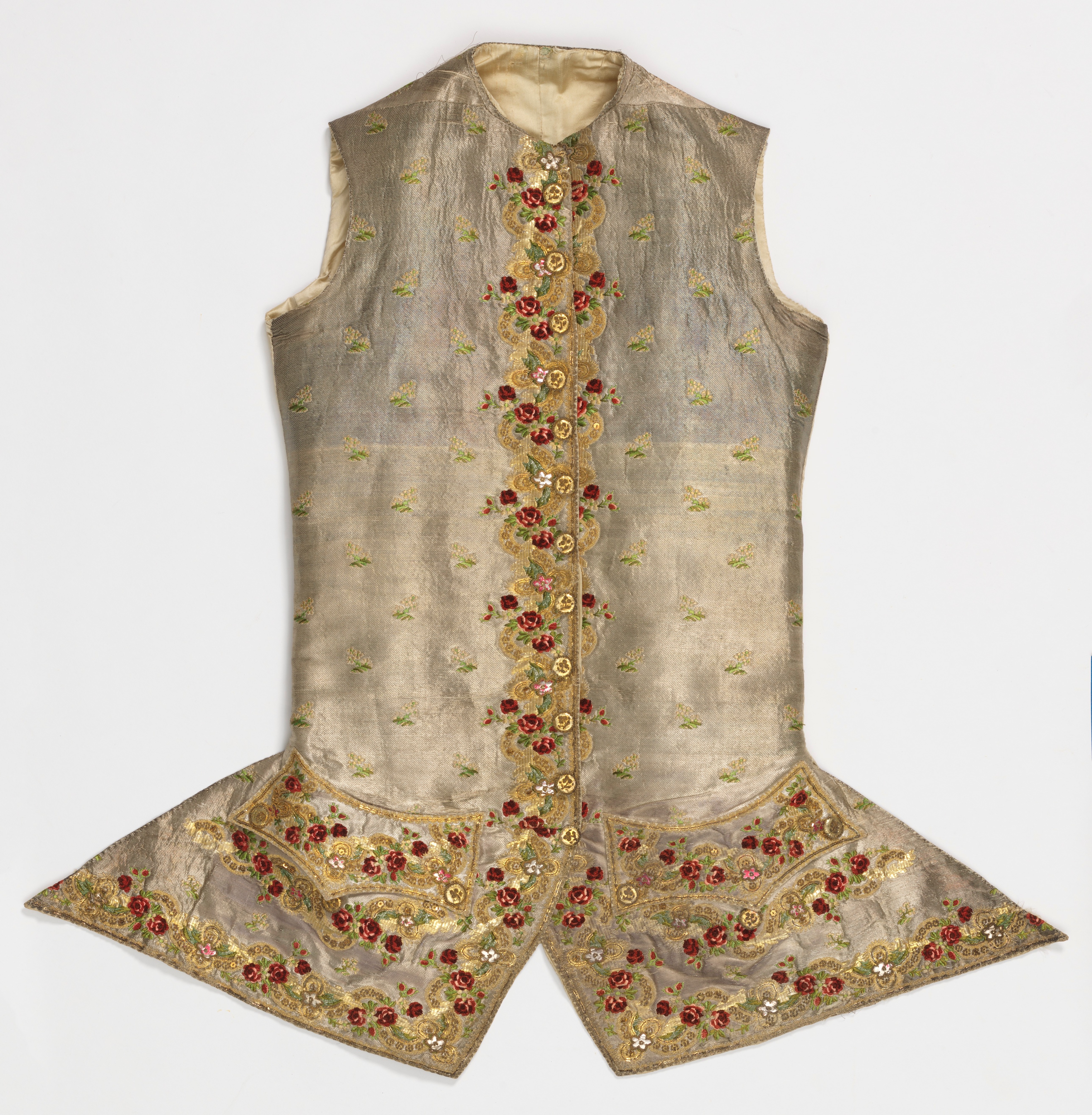
Embroidered Waistcoat (France), ca. 1780; silk, metallic thread; Gift of Richard Cranch Greenleaf; 1957-67-1
Sarah and Eleanor avidly collected military and civil buttons for their history and artistry. Metal buttons were used by the military on officers’ uniforms to identify the country and rank of the wearer. It has been said that King Frederick the Great of Prussia started the practice in the eighteenth century of having buttons sewn onto the sleeves of military uniforms—to discourage troops from wiping their noses on them! Uniforms worn by civil employees were also distinguished by identifying buttons.

(left) Brass and pewter button, 1830-48. One of 4 buttons denoting a special troop guarding Paris. Bequest of Sarah Cooper Hewitt; 1931-59-51-a/d. (right) Railroad employee button, white metal, 20th century, “PLM” (Paris-Lyon-Mediterranée Railway); Bequest of Sarah Cooper Hewitt; 1931-59-70-a
At Ringwood, the Hewitt family country home, coachmens’ livery had buttons with the family coat of arms, designed with an owl and the Latin motto, Tam Nocte Quam Die Sapire, meaning, “Wise both night and day.” Both the buttons and livery were made by John Patterson & Company, founded in 1852. An article titled “Dark Horses, Sombre Carriages, Inconspicuous Liveries” (New York Times, August 25, 1901) noted:
The livery of Abram S. Hewitt is always a very smart affair, and consists of green cloth, yellow trimmings, and gold buttons.
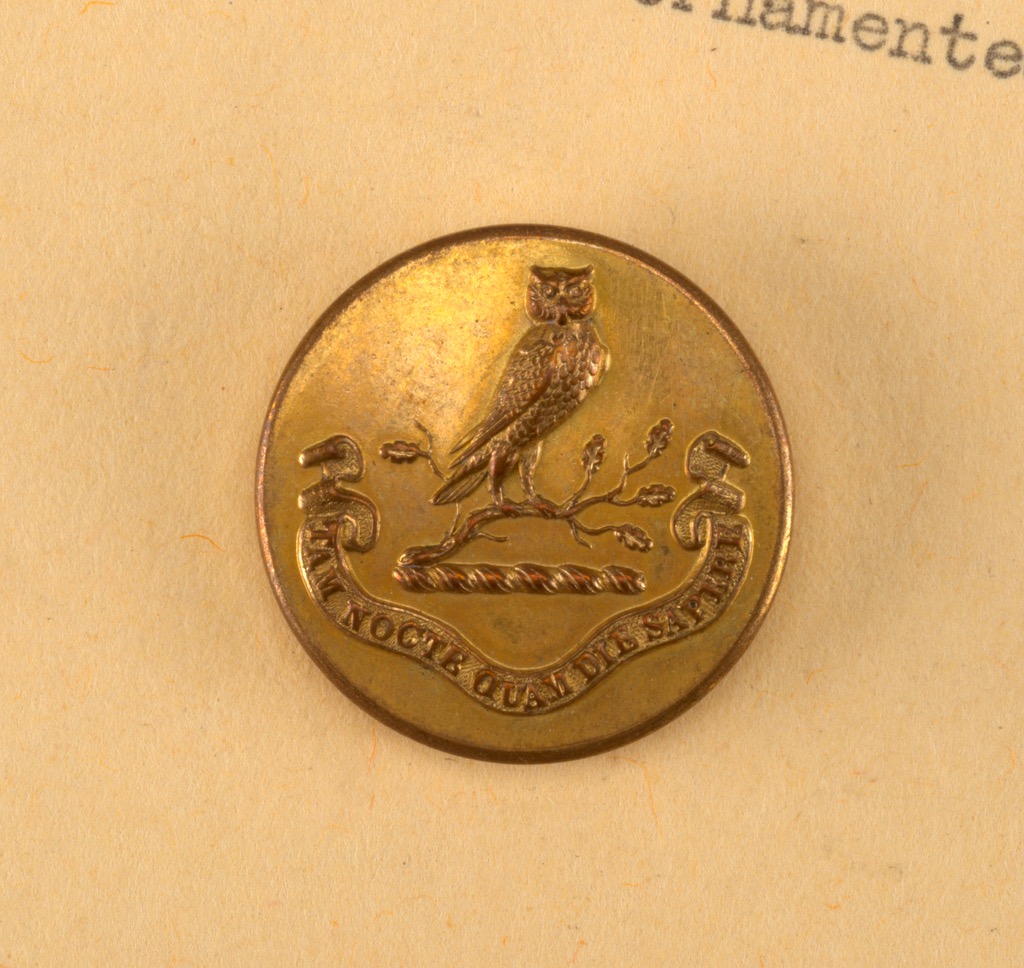
Hewitt Family Crest and Motto Button, brass; late 19th century. Gift of Norvin Hewitt Green; 1938-58-935-m
A highlight of the Hewitt sisters’ travels in Europe was shopping in the exclusive fashion houses of Paris. Inspired by menswear, Eleanor’s riding ensemble with jodhpurs (and many buttons) was a daring new fashion of the day. Sarah’s treasured Louis VI-style riding jacket (adorned with large buttons) was probably made by the House of Worth, Paris.

(left and middle) Eleanor’s riding ensemble, with jacket, vest, skirt, and jodhpurs, ca. 1896. Courtesy of the Metropolitan Museum of Art Costume Institute. Gift of the Princess Viggo. (right) Portrait of Sarah in French riding costume. Pastel by James Carroll Beckwith, 1899. Cooper Hewitt, Smithsonian Design Museum.
A colorful array of celluloid buttons from the mid-twentieth century by American industrial designer Marion Weeber Welsh are in Cooper Hewitt’s collection. Here are two to make you smile and want to look at others by Welsh. (As a side note, the phrase “cute as a button” was originally coined not to refer to a button, but to a bud of a flower. )
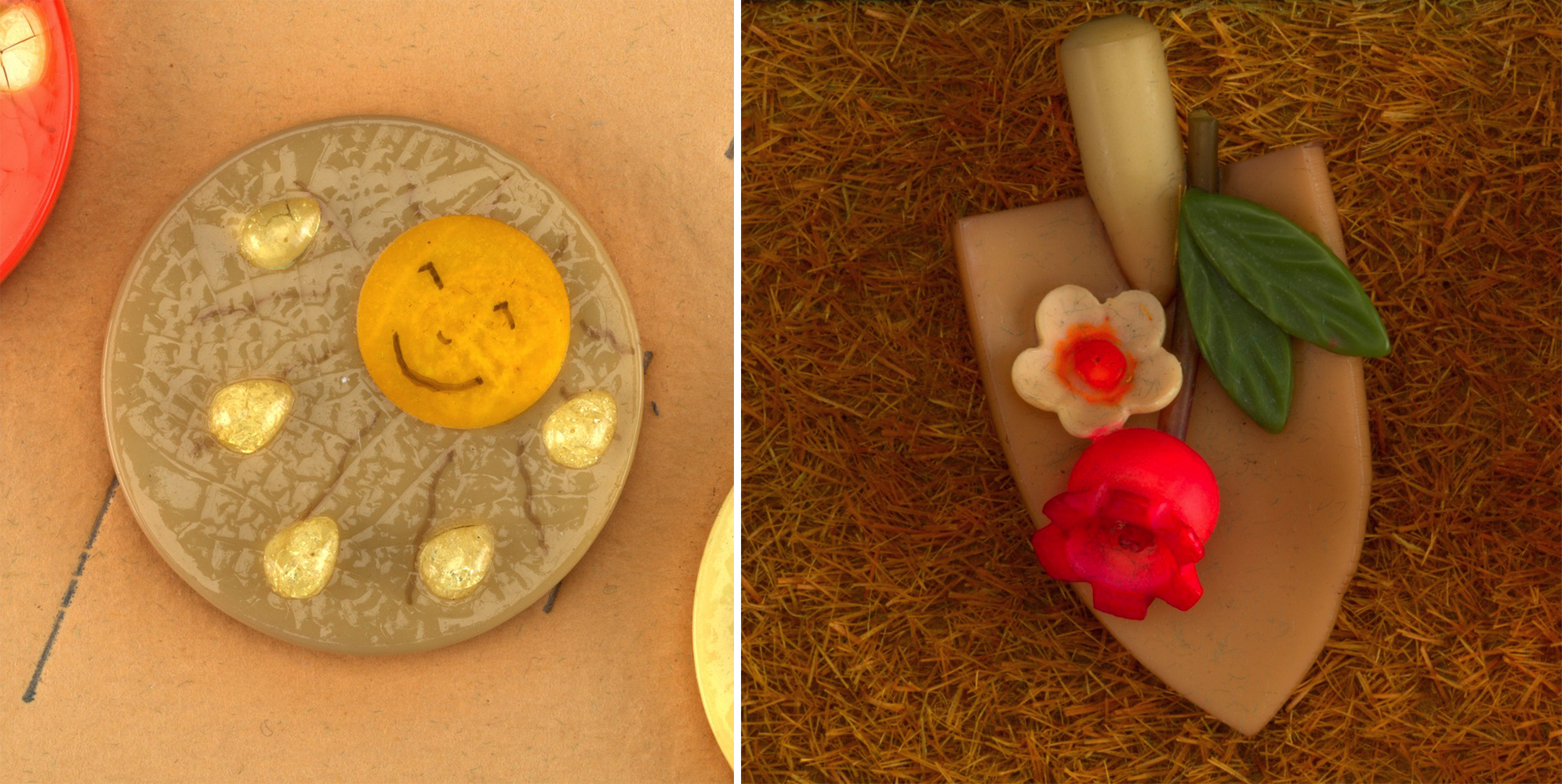
(left) “April Showers” Button, 1943; Designed by Marion Weeber Welsh (1905–2000); celluloid; Bequest of Marion Weeber Welsh; 2006-2-26. (right) ”Planting Time” Button, 1942; Designed by Marion Weeber Welsh (1905–2000);; celluloid; Bequest of Marion Weeber Welsh; 2006-2-50
Button collecting remains a hugely popular hobby. The National Button Society was organized in 1938 to emphasize the preservation and study of clothing buttons. It recognized the passion for button collecting as a hobby anyone could afford during the Depression years. Today local chapters count thousands of members and operate in 39 states. The website offers a visual button journey through the history and classification of buttons.
In closing (literally), this poster features Levi’s iconic model 501 button-fly jeans. Vive le bouton!

